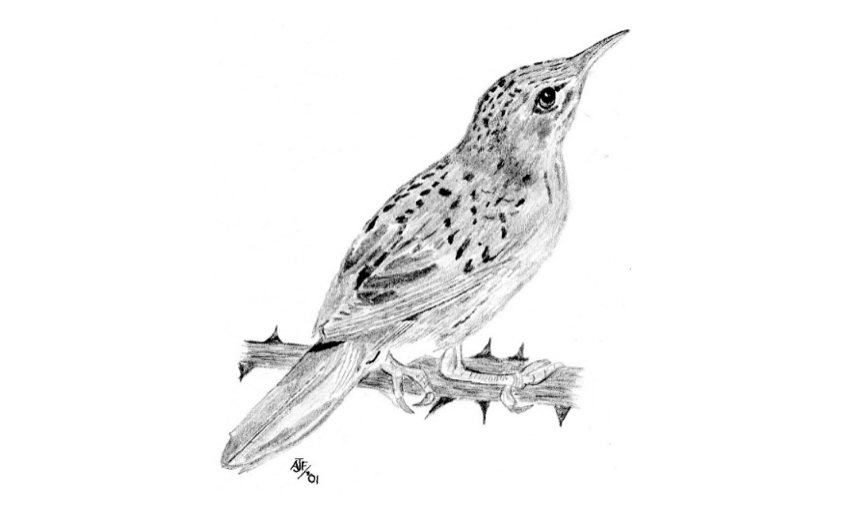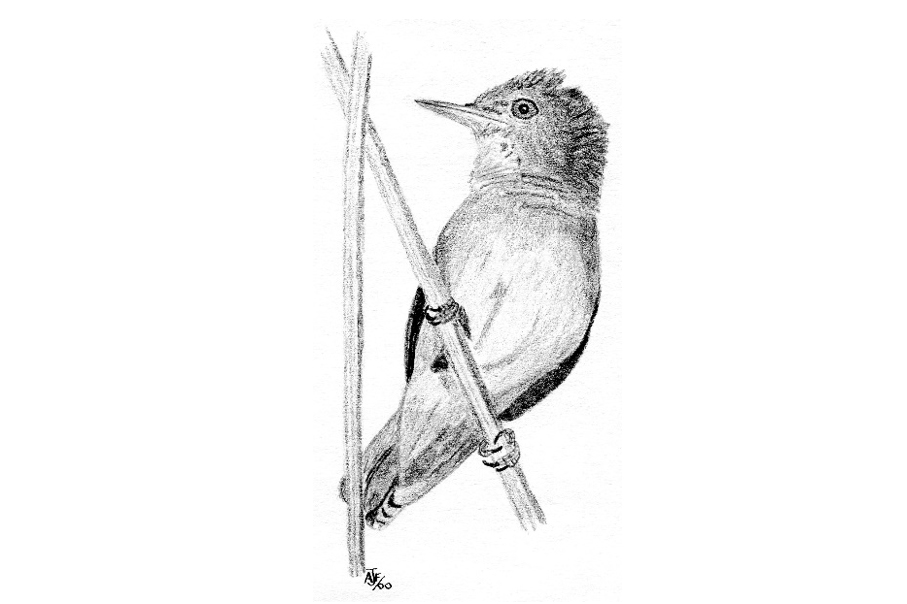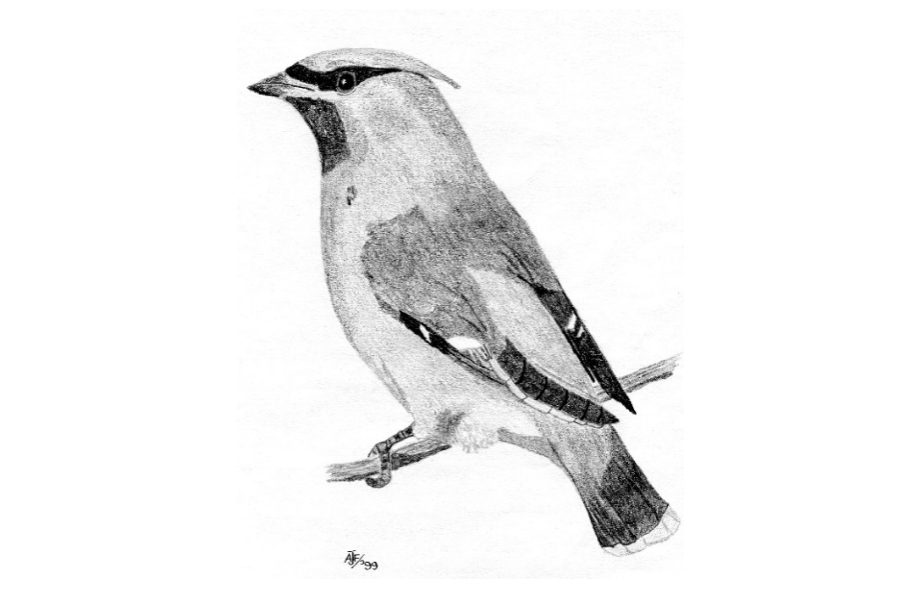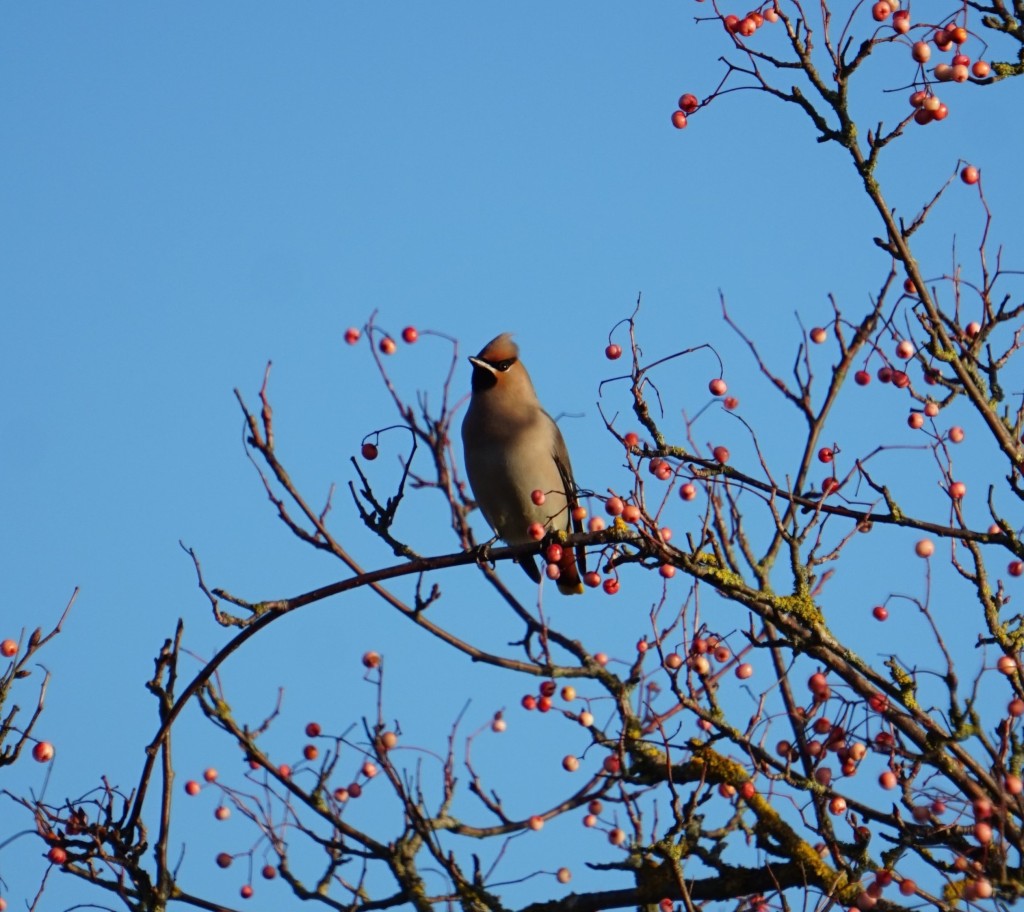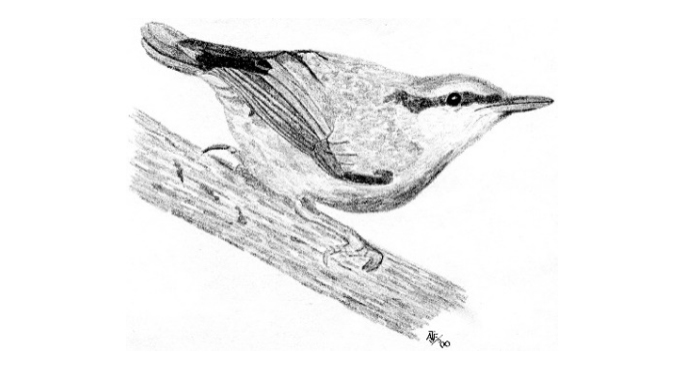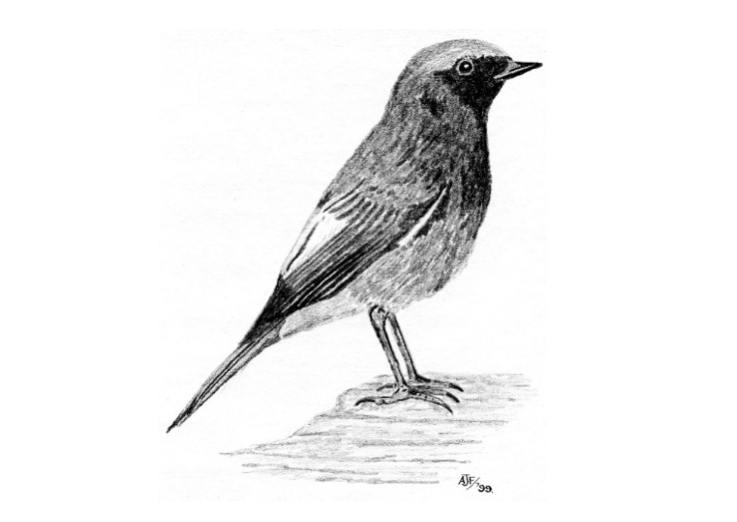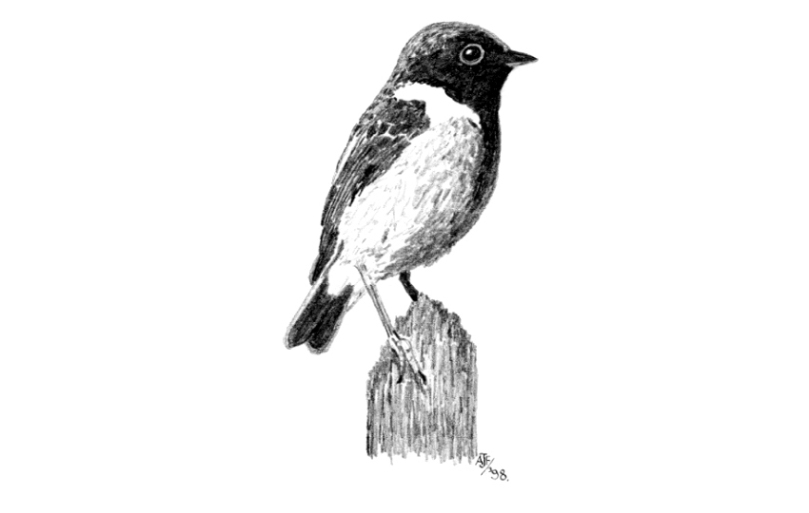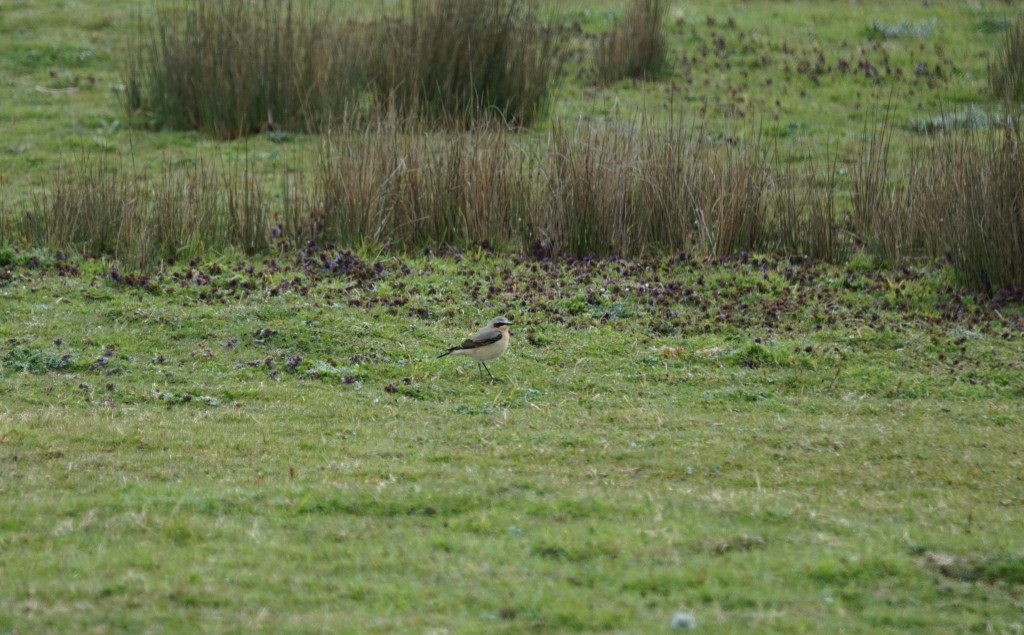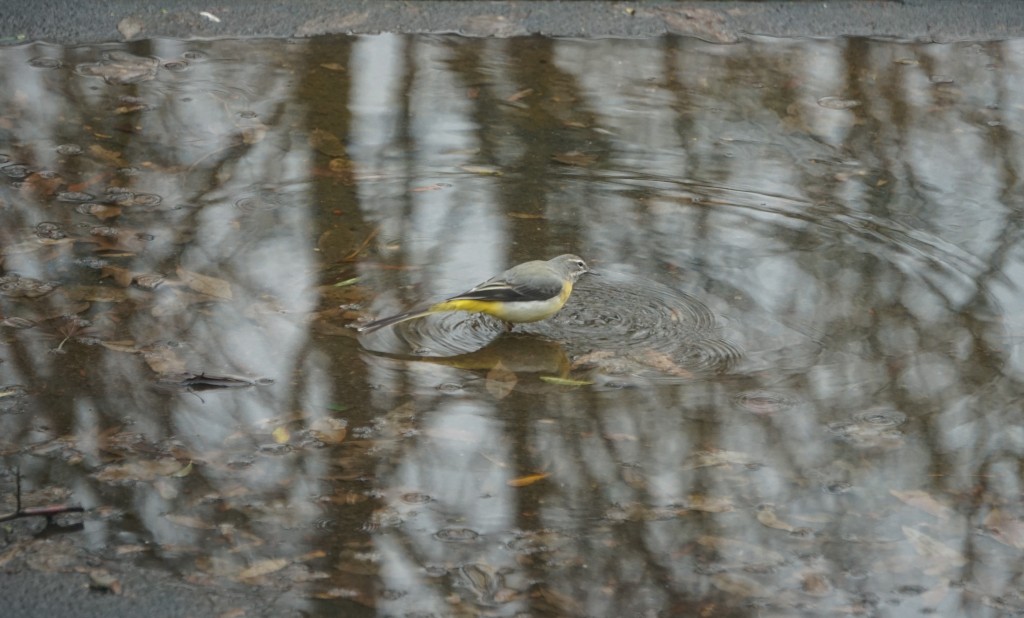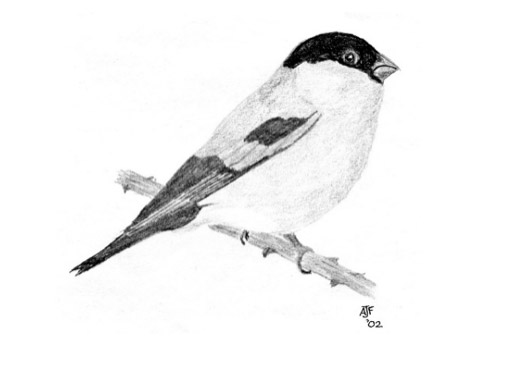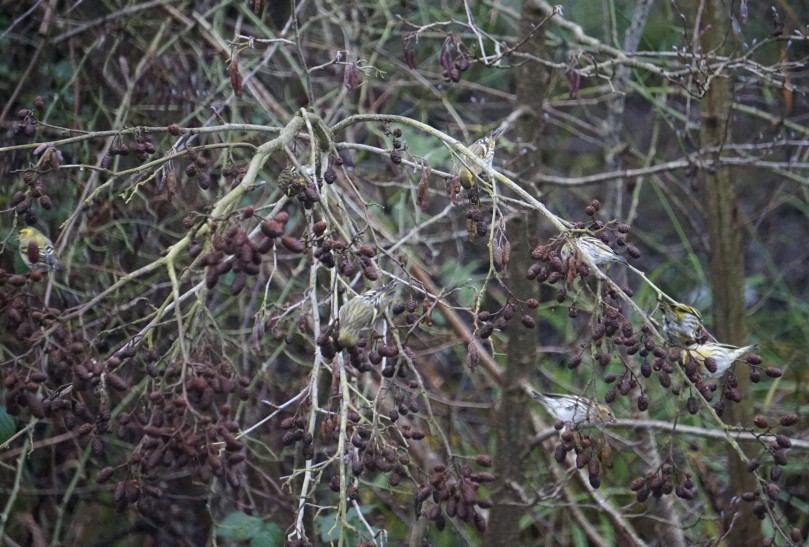Former resident of the town’s principal woodlands.
The Hawfinch is the largest of Britain’s native Finches, and the most elusive. They inhabit mature broad leaved woodlands, especially those with good stands of Hornbeam or Cherry. In winter they form small flocks and disperse locally and, sometimes visit gardens. They are vulnerable during cold winters. Nationally their breeding population and, range are in decline.
The 1879 Hertfordshire Bird Report contained a comment that Hawfinches were, “adept at stripping and shelling peas and, in gardens are said to be more destructive than the Bullfinch”.
Foster (1914) described Hawfinches as, “locally common near Stevenage”. He also recorded that, “a pair nest annually in a garden close to the town”. In Hine, (1934), he recorded that they bred at Box Wood.
During the fieldwork for the 1973 Breeding Atlas the Hawfinch featured in more tetrads in the 10 Kilometre Square in which Stevenage falls than any other in the County, with breeding confirmed from three tetrads. Despite being confirmed as breeding in two of the tetrads covering Stevenage in the 1992 Atlas, they have declined dramatically and, apart from migratory birds are now probably extinct at Stevenage.
The decline in Hertfordshire is widespread and the reasons are unknown. In 1967 a decline was noted at Box Wood following the felling of an area that included Hornbeams.
The records for the principal sites where Hawfinches were formerly found at Stevenage are;
Astonbury Wood: several seen on 4 January 1969 feeding on Hawthorn seeds and one seen drinking on 5 March 1969; seen between 15 and 20 on 11 February 1973; present 1974; one on 20 May, 19 June, 17 July, 25 September, 29 September and 26 December 1977; two or, more birds heard calling in March and April 1978, a pair seen feeding newly hatched young on 21 July and, a pair calling on 20 August 1978; single bird April 1980; breeding confirmed June 1980, with a pair seen carrying food on 14 June; present in 1981; three seen in March and April 1989; nine on 20 January 1990; present in 1991; 10 on 24 February 1992; four on 8 March 1992.
Box Wood: Small party seen in the winter 1960; one seen on 20 May 1962; a pair with two young recorded in 1964; 12 on 25 February 1965, a pair on 28 March and 22 April 1965, three on 3 April, four on 22 May and, six on 11 December 1965; present all year 1966; one 27 June 1967; remains of a bird presumed to have been taken by a predator found on 17 April 1969; one on 31 June 1970; 20 on 8 October 1972; seen March and April 1973; present 1974; one in April 1976; one in August 1978; recorded in April, May and December 1979; four plus seen April 1980; a male two females and a juvenile ringed 1980, both females apparently nesting; four on 29 March and 30 May 1981; Adult males were ringed on 13 June and 4 July 1981 and, also a female on 4 July with a brood patch indicating breeding in the wood; two on 5 November 1982; one on 8 December 1982; several pairs bred in 1983; two on 18 May 1984; one on 7 June 1986; recorded in 1988; two males in 1989; one on 13 April 1991.
Fairlands Valley Lakes: One found dead in January 1978; recorded in 1980 and 1981; one on 27 February 1983; one on 28 May 1989.
Monks Wood: Nested in 1966 with several seen 30 April; one on 9 April 1967; indications of breeding 1967/8; seen on 2 September 1971; present 1972; seen from March to May 1973; six on 9 March 1974; 13 on 26 February 1989; three on 30 January 1994.
Pryors Wood: Present all year in 1981.
Watery Grove: seen from March to May 1971; seen March and April 1973; present 1974; seen on 10 occasions in 1975; two pairs nested in 1977; present in 1978, 1979 and 1980 (with up to three seen); six on 27 March 1981; seven on 2 April 1981; a pair present in 1983; present during the 1985 breeding season; pair present in 1989. The Common Bird Census recoded single breeding territories being held in 1972, 1975 and 1977, their presence in the 1979 breeding season, two territories being held in 1980 and 1982, and their presence in 1984, 1985, 1987, and 1989. Watery Grove remains typical Hawfinch habitat, and their present absence from the wood would appear to be part of their general decline.
Whomerley Wood: a pair 28 March and 22 April 1965; three on 3 April 1965; four on 22 May 1965; six on 11 February 1965; bred in 1969; over-wintered for the first time 1969/70; male and female drinking at the pond of the, “Moat Sanctuary” on 8 May 1970 and several young birds seen in the wood in July and August; numerous in 1971 (with breeding suspected); 13 on 13 February 1972; seen March and April 1973; nesting near the, “Sanctuary” 1974; between six and eight 21 March 1975; pair seen during the summer 1980; at least 20 on 30 March 1981; seven on 12 June 1981.
Two records away from the principal sites: one seen at The Nobel Grammar School, Mobbsbury Way on 2 May 1967 and single birds flying over Chells during April 1979.
More recent records are: two seen at Gresley Way on 31 March 2006. (During the 2005/2006 winter small flocks had been seen in the County which were believed to be of Continental origin); one heard calling in the “clearing” between Watery Grove and Cannocks Wood on 3 April 2014.
During the autumn of 2017 there was a considerable influx of birds to Britain due to crop failures in Germany and, Romania, with large flocks seen in Hertfordshire in the winter of 2017/18. At Stevenage birds up to 12 birds were seen between 22 January and 14 March 2018 at Upper Kitching Spring and, at Watery Grove, one was seen on 1 January and, 35 on 27 February 2018.
Small numbers of Hawfinches were ringed in Hertfordshire in the 1970’s and 1980’s, one ringed at Wheathampstead was found at Box Wood.
The most recent records are of one seen at Fairlands Valley Lakes on 14 November 2022, one at Fairlands Farmhouse on 27 October 2024 and one at Pin Green on 3 November 2024.

